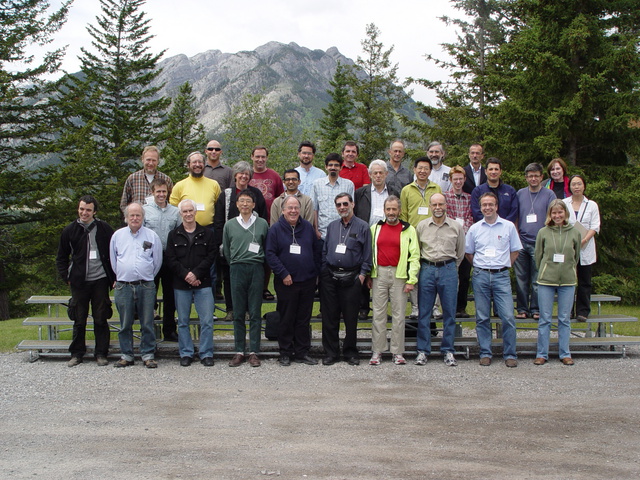Structure and representations of exceptional groups (10w5039)
Organizers
S. Twareque Ali (Concordia University)
Wulf Rossmann (University of Ottawa)
David Vogan (MIT)
Joseph Wolf (University of California - Berkeley)
Description
The Banff International Research Station will host the "Structure and representations of exceptional groups" workshop from July 4 to 9, 2010.
From Cartan and Killing's original classification of simple Lie groups in the 1890s, these groups have been understood to be of two rather different types the infinite families of classical groups (related to classical linear algebra and geometry); and a finite number of exceptional groups, ranging from the 14-dimensional groups of type G2 to the 248-dimensional groups of type E8. Often it is possible to study all simple Lie groups at once, without reference to the classification; but for many fundamental problems, it is still necessary to treat each simple group separately.
For the classical groups, such case-by-case analysis often leads to arguments by induction on the dimension (as for instance in Gauss's method for solving systems of linear equations). This kind of structure and representation theory for classical groups brings tools from combinatorics (like the Robinson-Schensted algorithm), and leads to many beautiful and powerful results.
For the exceptional groups, such arguments are not available. The groups are not directly connected to classical combinatorics. A typical example of odd phenomena associated to the exceptional groups is the non-integrable almost complex structure on the six-dimensional sphere S^6, derived from the group G2. What makes mathematics possible in this world is that there are only finitely many exceptional groups: some questions can be answered one group at a time, by hand or computer calculation.
The same peculiarity makes the possibility of connecting the exceptional groups to physics an extraordinarily appealing one. The geometry of special relativity is governed by the ten-dimensional Lorentz group of the quadratic form of signature (3,1). Mathematically this group is part of a family of Lorentz groups attached to signatures (p,q), for any non-negative integers p and q; there is no obvious mathematical reason to prefer the signature (3,1). A physical theory attached to an exceptional group - best of all, to the largest exceptional groups of type E8 - would have no such mathematical cousins. There is only one E8.
Two years ago Garrett Lisi proposed an extension of the Standard Model in physics, based on the structure of the 248 dimensional exceptional Lie algebra E8. Lisi's paper raises a number of mathematically interesting questions about the structure of E8, for instance this one: the work of Berel and de Siebenthal published in 1949, and Dynkin's work from around 1950, gave a great deal of information on the complex subgroups of complex simple Lie groups. For example, they independently showed that complex E8 contains (up to conjugacy) just one subgroup locally isomorphic to SL(5,C) x SL(5,C). For Lisi's work, one needs to know about _real_ subgroups of _real_ simple groups: which real forms of SL(5) x SL(5) can appear in a particular real form of E8? These are subtle questions, not yet completely understood. A mathematical study of these questions is interesting for its own sake, and may provide some constraints on the structure of the physical theories that can be built using E8.
The goal of this workshop is to introduce mathematicians to these physical ideas, and to describe much of the recent mathematical work on the exceptional Lie groups.
The Banff International Research Station for Mathematical Innovation and Discovery (BIRS) is a collaborative Canada-US-Mexico venture that provides an environment for creative interaction as well as the exchange of ideas, knowledge, and methods within the Mathematical Sciences, with related disciplines and with industry. The research station is located at The Banff Centre in Alberta and is supported by Canada's Natural Science and Engineering Research Council (NSERC), the US National Science Foundation (NSF), Alberta's Advanced Education and Technology, and Mexico's Consejo Nacional de Ciencia y Tecnología (CONACYT).






